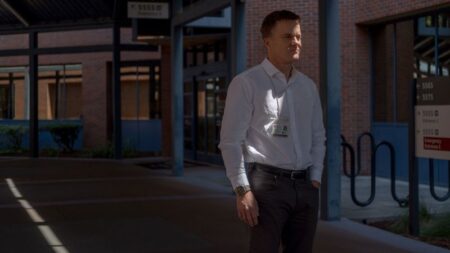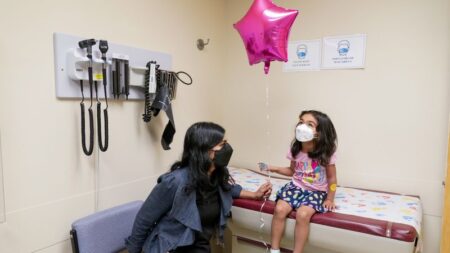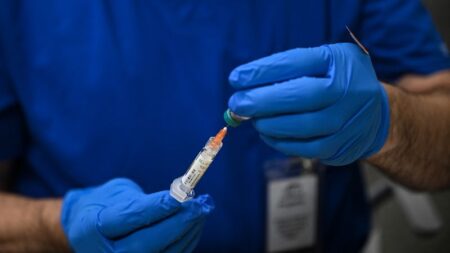In a narrative deeply entwined with personal struggle and resilience, Charmella and Kiki Roark exemplify the rising trend of breast cancer diagnoses among younger women in the United States. Charmella recalls the paralyzing shock she felt upon learning that her younger sister, Kiki, had been diagnosed with stage I breast cancer in 2018. This alarming news was particularly distressing considering their family had already suffered the loss of an aunt to the disease only a few years earlier. “I was in disbelief,” Charmella shared, emphasizing her sister’s significance as her first best friend.
Fast forward four years, and Charmella found herself facing the same diagnosis, a stark revelation of the concerning trends reported by the American Cancer Society. This report highlights an alarming shift in cancer diagnoses, particularly among younger women, marking a shift from older demographics to the younger population— a phenomenon that has alarmed both healthcare professionals and the public alike. In the past two decades, while cancer rates have tapered off among men and stabilized overall, the incidence of cancer among women, especially younger women, appears to be on the rise.
The report indicates that middle-aged women now bear a slightly higher cancer risk than their male counterparts. Notably, the incidence of breast and thyroid cancers has surged, driving the statistics upward. Lead author Rebecca Siegel stated, “Breast and thyroid cancer account for almost half of all cancer diagnoses in women younger than 50.” This alarming statistic serves as a wake-up call, especially given that Kiki was only 37 when she sought medical attention for sharp pains radiating from her armpit. Despite pushing for a mammogram—a procedure dismissed by multiple doctors due to her age—Kiki ultimately had to advocate for herself, which was crucial in finally obtaining the correct diagnosis.
Kiki underwent a double mastectomy and hormone therapy following her diagnosis, and her resilience not only inspired her sister but also prompted her to organize routine screenings. Tragically, Kiki’s bravery could not shield Charmella from a similar fate, as a routine mammogram in 2022 revealed that she, too, had stage I breast cancer at the age of 44. Both sisters had unintentionally aligned themselves with a statistical reality—approximately one in three women in the U.S. will face a cancer diagnosis in their lifetime.
The statistics bear out a grim reality where women under 50 experienced an 82% higher cancer incidence rate than their male peers in 2021. As Dr. William Dahut of the American Cancer Society recounts, “We see for the first time, if you’re a woman under the age of 65, you’re now more likely to develop cancer than men in that same age group.” This rising incidence amongst younger populations has prompted critical discussions regarding aging and cancer risk, emphasizing how an increase in early diagnoses is coupled with shifting patterns in lifestyle factors like fertility, obesity, and environmental risks.
At present, both Kiki and Charmella are cancer-free, yet their story is underscored by the sobering realities facing Black women in America. Despite having lower incidence rates of breast cancer than their white counterparts, Black women are 41% more likely to fall victim to the disease. The disparities continue to illuminate a glaring inequality in cancer outcomes that the healthcare community is keen to address.
Geographic variation in cancer rates is also notable, as areas like Utah and Hawaii report significantly lower cancer mortality than states like West Virginia and Mississippi. Nevertheless, amidst this challenging landscape, there exists hope. Overall, cancer survival rates continue to improve, buoyed by advancements in treatment, early detection, and a notable decline in smoking-related cancer cases.
The Roark sisters aim to educate and empower others regarding the significance of advocacy in seeking timely medical intervention. “I always say, advocate for yourself,” Kiki advises, emphasizing the potential dangers of dismissing one’s health concerns. According to the American Cancer Society, over 2 million cancer diagnoses are projected for the year, reiterating the strict necessity for vigilance and early screening.
As doctors explore the underlying factors contributing to the rise in cancer among younger individuals, it becomes increasingly clear that lifestyle choices, hormonal changes, and environmental influences must be studied in depth to reduce risk. Ongoing research into these factors can lay the foundation for preventative strategies tailored to younger demographics, which may profoundly reshape the landscape of cancer care in the future. While the road ahead is beset with challenges, the Roark sisters continue to advocate for themselves and others, hopeful that the ongoing battle against cancer will foster greater awareness and change within the healthcare system.












